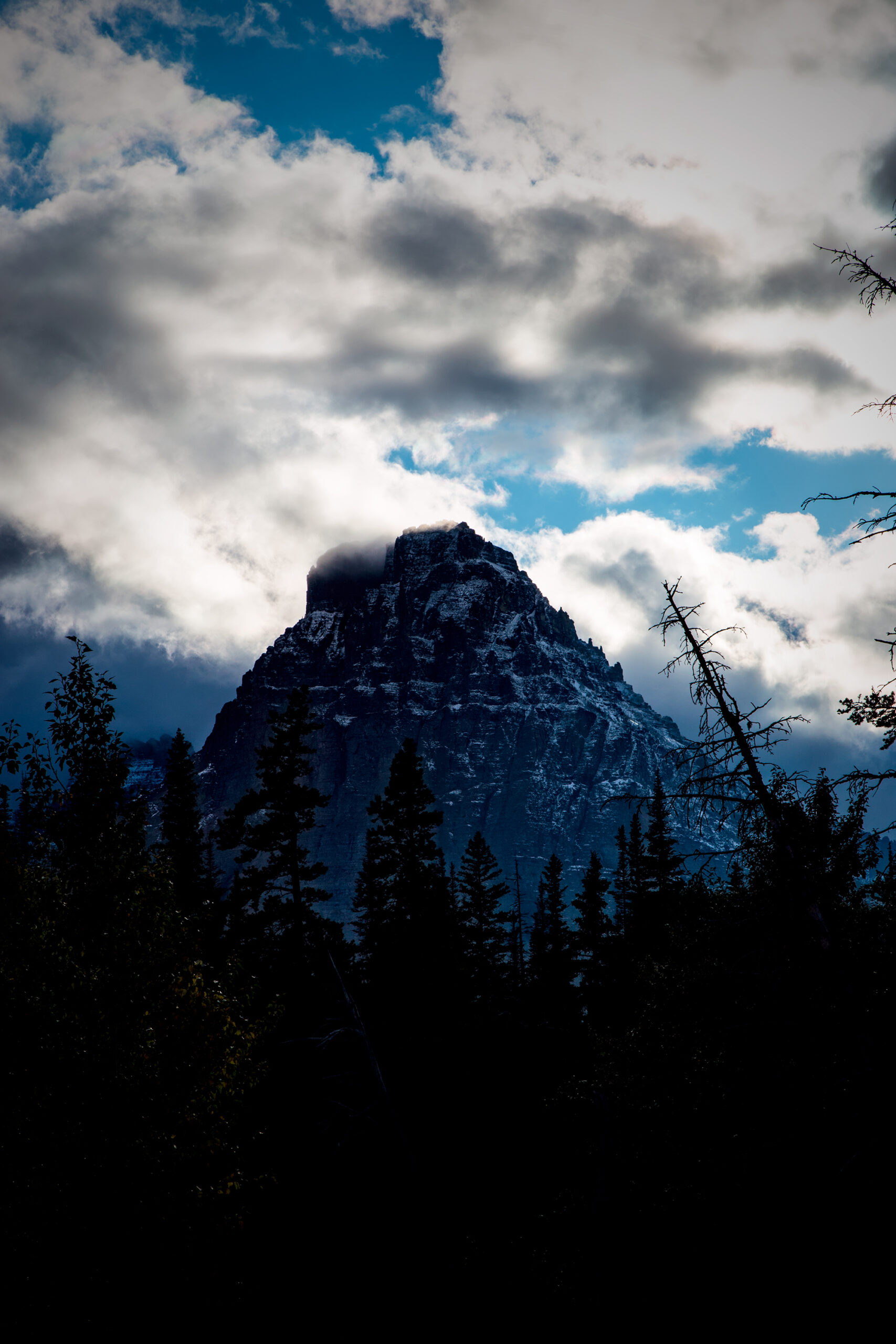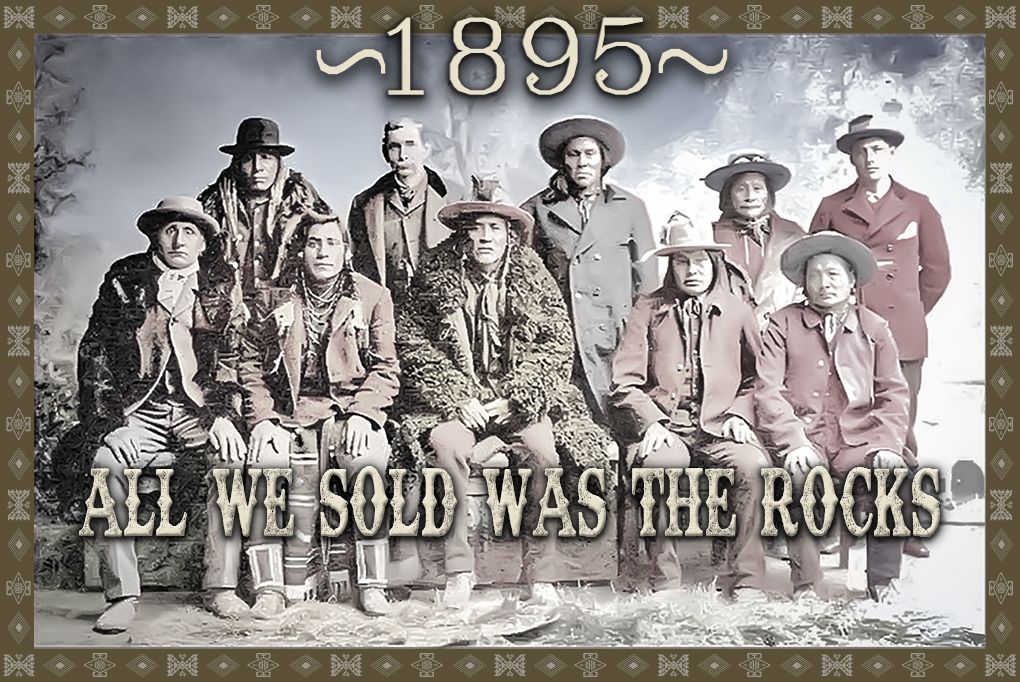
The True Story
Based on factual, historic events, taken from historical journals and tribal stories handed down thru time, the goal of this website is to tell the true story of the relationship between the Amp Ska Pi Pikuni – Blackfeet Tribe and the US Government. This is important to reveal how Blackfeet Ancestral lands were taken from the tribe under questionable negotiation tactics—land which would eventually become one of the USA’s most beautiful National Parks.
The underlying goal is to provide a dramatic accounting of the 1895 Treaty negotiations. Including the horrific circumstances that led up to the decimation of the tribe in the mid-1800s, rendering them at a disadvantage to the machinations, subterfuge, and misdirection that comprised the push by the US Government to purchase the lands. There were two sets of negotiations: One was between members of the tribe, held in their council lodge, culminating in sometimes divisive, tumultuous, and impassioned discussions; the other was the official negotiations between the tribal representatives and the US Indian Commissioners, a slow and tedious process carried out through interpreters who did not fully understand the Blackfeet language.

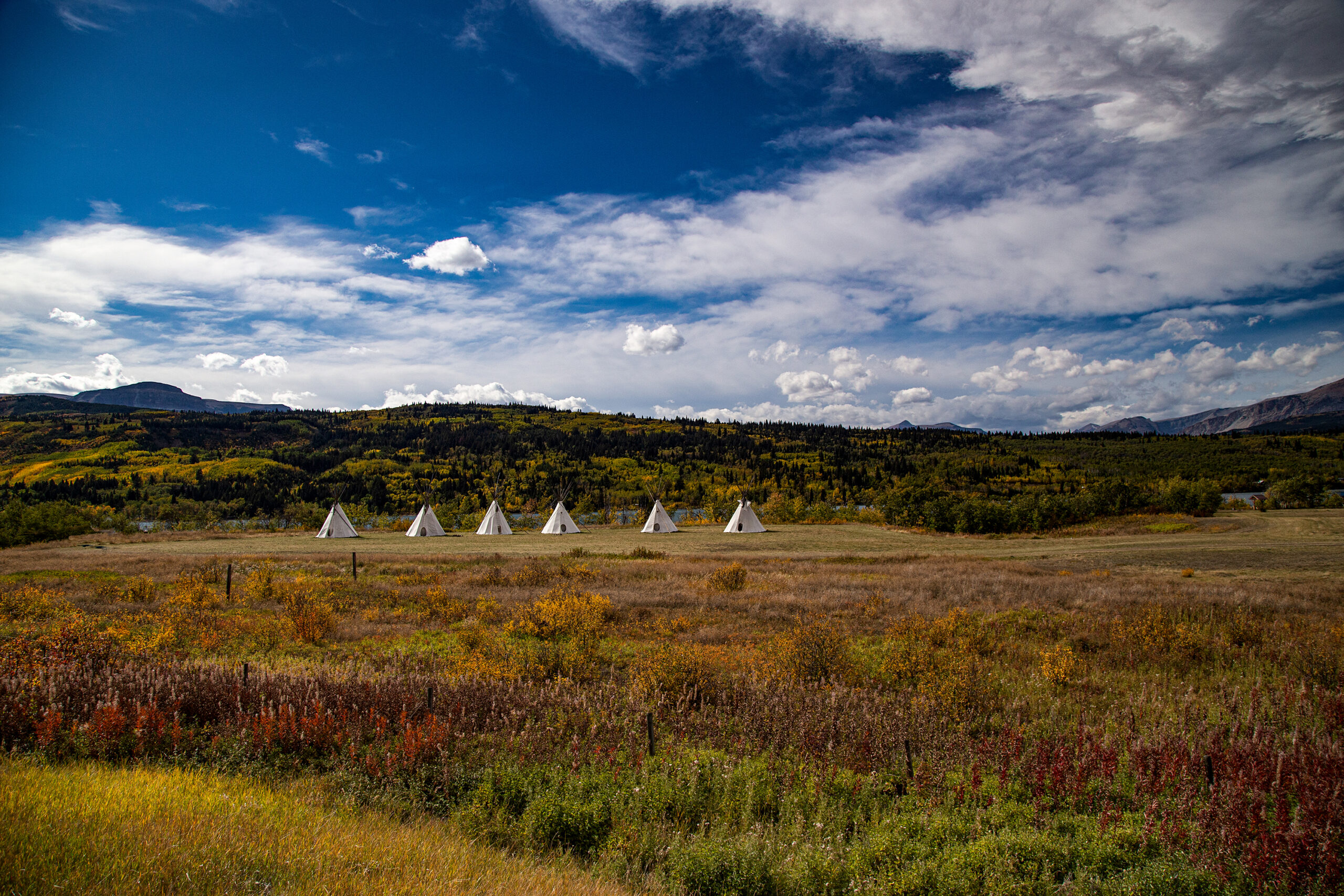
The following is a comprehensive overview that provides historical factual information for the documentary.
A Crucial Backstory
From 1800 until 1831 peaceful relations between the Blackfeet and the Americans were non-existent. Although numerous companies were formed to trade with the Blackfeet, as well as to trap them within their land, virtually all were unsuccessful and were pushed out of the Blackfeet lands by force. For over a quarter of a century after their first contact with the Blackfeet, the Americans had failed to make peace with them. So feared were the Blackfeet that wagon trains traveling to the Oregon Territory passed well to the south.
However, by the mid-1800s, the Blackfeet had become well acquainted with the Americans, trading with the Americans on a regular basis for nearly a generation. And though relations were going smoothly, tensions over territorial intrusions created a fragile existence between the Americans and the Blackfeet Nation.
The Blackfeet, determined to stop incursions into their lands, was creating havoc with settlers, and neighboring tribes. War parties regularly crossed to the west side of the Rocky Mountains to raid distant tribal camps for horses. To the south, American settlers were seemingly unstoppable in their continued trek westward. Yet, at this time, no real American settlements had been built on Blackfeet Tribal Lands, except for traders and trading posts.
By the year 1850, the Blackfeet were truly masters of the upper Great Plains and were slowly learning how to trade well with the American settlers. But then diseases such as smallpox struck suddenly and the deadly sickness took a heavy toll, killing thousands.
![]()


Since 1845 the United States had pushed westward under the decree of Manifest Destiny, driven harder by the discovery of gold, silver, and other minerals across Blackfeet territories. Tensions rose as violent conflicts became increasingly common between Blackfeet warriors and the increasing multitude of prospectors and settlers encroaching on tribal lands.
1855 – The First Treaty

Beginning with this first treaty between the US Government and the Blackfeet Nation in 1855, the Blackfeet agreed to live in peace with the Americans, as well as neighboring tribes. They would share a portion of their territory for use by other tribes as a common hunting ground. They would allow settlers to pass through their lands unmolested, and they would allow the US Government to build roads, telegraph lines, agencies, church missions, military posts, and other facilities as deemed necessary.
From the US Governments’ perspective, the main purpose of the 1855 treaty was to stop the Blackfeet from waging war on neighboring tribes. But it had little effect as conditions of the treaty were rarely met by the US Government, spurring distrust and resentment from the Blackfeet.

The 1855 Treaty stipulated that; In return for the concessions by the Blackfeet, the US Government agreed to spend $20,000 annually on goods and provisions for the Blackfeet people over a period of 10 years. And to spend an additional $15,000 annually for 10 years to “try and convert the Blackfeet into agricultural and mechanical pursuits and for education and in other ways that would promote the welfare of the Blackfeet Nation“…
To Civilize the Blackfeet
After signing the 1855 Treaty, the Blackfeet believed their homeland had been guaranteed to remain theirs if they would share the Three Forks area as a common hunting ground with western tribes. Additionally, they agreed to share the area east of the Milk River and north of the Missouri River with the Assiniboine Nation.
These hunting agreements were supposed to last for 99 years, with the US government guaranteeing to provide many things the tribe needed to survive in exchange for safe passage through Blackfeet country. Unfortunately, this led the Blackfeet to begin losing their independence by becoming reliant on the use of modern trade goods. No longer would they make everything they needed to survive from natural resources.
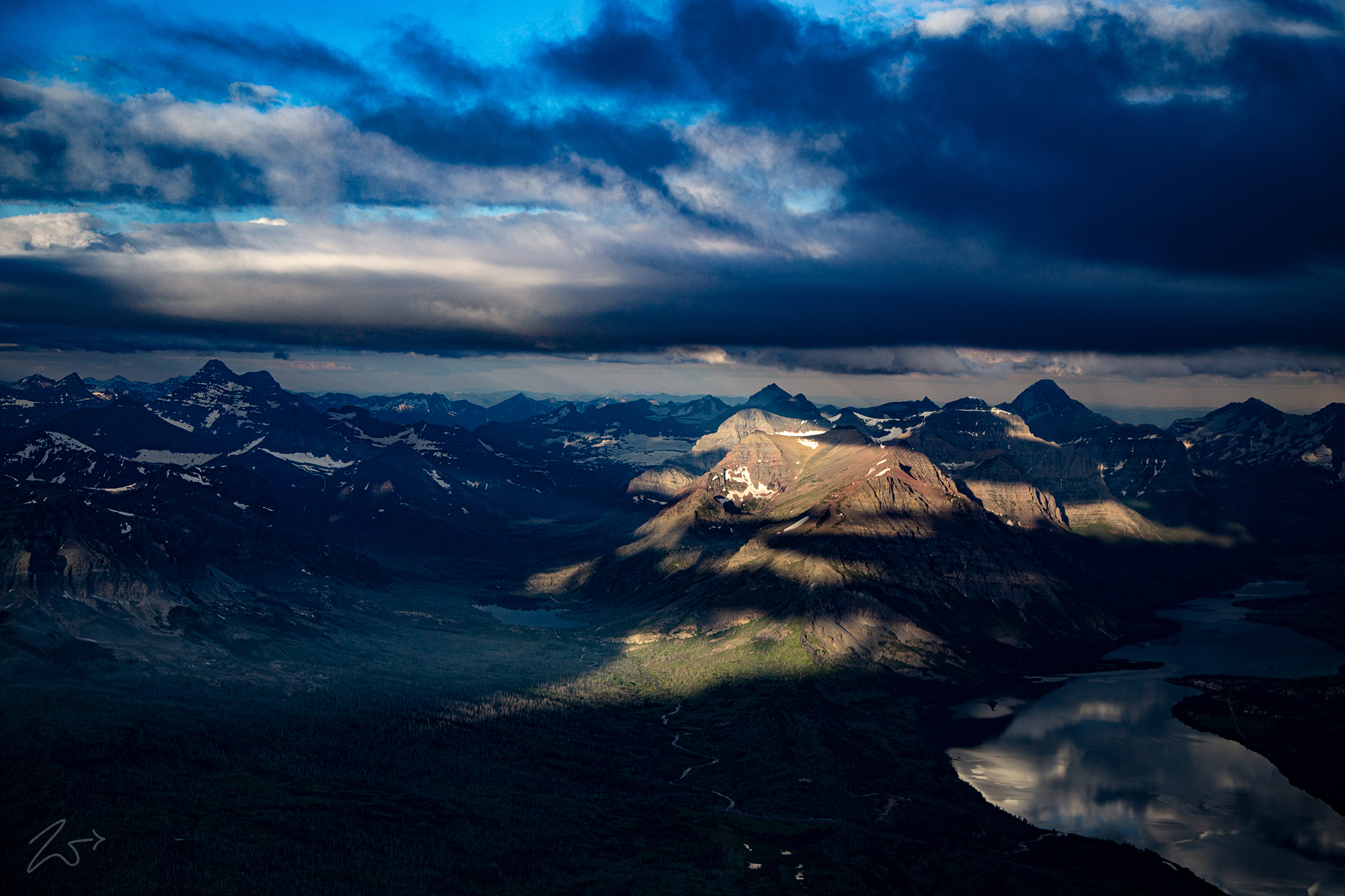
Thar’s Gold In Them Hills

During this short time period, it seemed the Americans coveted nothing more from the Blackfeet homeland. But this ended in 1862 and 1863 when gold was found, first at several important sites located right in the middle of the common hunting ground. Then other gold sites were found on Blackfeet lands.
Within 10 years, by 1865, the 1855 Treaty was largely ignored. Over the course of only 2 decades, by the 1880s, the huge bison herds that populated the vast shared hunting grounds were being killed off, totally destroyed. Now, instead of tranquil scenes of Blackfeet tribal lodges dotting the Montana hillsides, or sitting alongside streams and lakes, settlers’ cabins and mining camps spread across the landscape.
Waves of miners openly trespassed with impunity throughout Blackfeet country looking for gold, and no one from the US Government did anything to stop it.
Tensions rose to a very dangerous breaking point
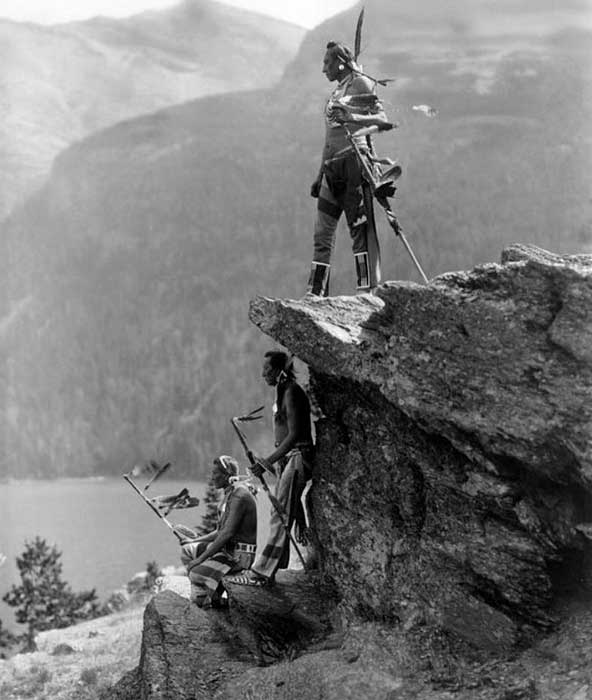
The Baker Massacre of 1870
As pressures grew with rapidly growing numbers of settler incursions onto Blackfeet lands, the Blackfeet tried hard to avoid trouble. But, when a pioneer settler named Malcolm Clarke, living on a remote ranch north of Helena, beat and sexually assaulted his wife, who was Blackfeet and sister of Owl Child, a member of Mountain Chief’s Band. Owl Child took revenge and killed Malcolm Clark which enraged local settlers who demanded revenge.
In brutal retaliation, on a cold January morning in 1870, with many in the sleeping tribe still greatly suffering in their lodges from smallpox, US Army Troops attacked Chief Heavy Runner’s camp. Known as one of the most peaceful chiefs, this horrendous attack on Heavy Runner and his camp, was completely unwarranted. Troops had brutally attacked Heavy Runner’s camp instead of that of Mountain Chief. When told this was the wrong camp by their scout, Joe Kipp who tried to call out and warn Heavy Runner, Joe was threatened by the Army commander and told it didn’t matter as “A savage was a savage“
Heavy Runner and his peaceful band were known as “Small Robes” and had long been guaranteed the protection of the US Government. This horrendous massacre tore at the very heart of the Blackfeet Nation. Then, in the following dreadful winter, another 2,000 Blackfeet tribespeople died from smallpox.


A Drawing of the Baker Massacre Aftermath
These were harsh times for the Blackfeet
The massacre was celebrated as a great military victory by the US Army and local residents of Bozeman and Helena. However, when newspapers back east reported the high numbers of elderly, women, and children that were viciously murdered, it created a scandal but was quickly covered up in Washington, D.C.
Conflicts between settlers and the Blackfeet declined after the massacre. The Blackfoot Nation, weakened by smallpox, did not have enough warriors to retaliate and now truly regarded the Americans as a brutal people. The massacre and subsequent public fallout helped facilitate the dispossession of Blackfeet lands.
Worse Yet, it made the Blackfeet people ever more dependent on the US Government

Blackfeet Family Wearing a Mix of Traditional and Modern Clothing, Late 1800s
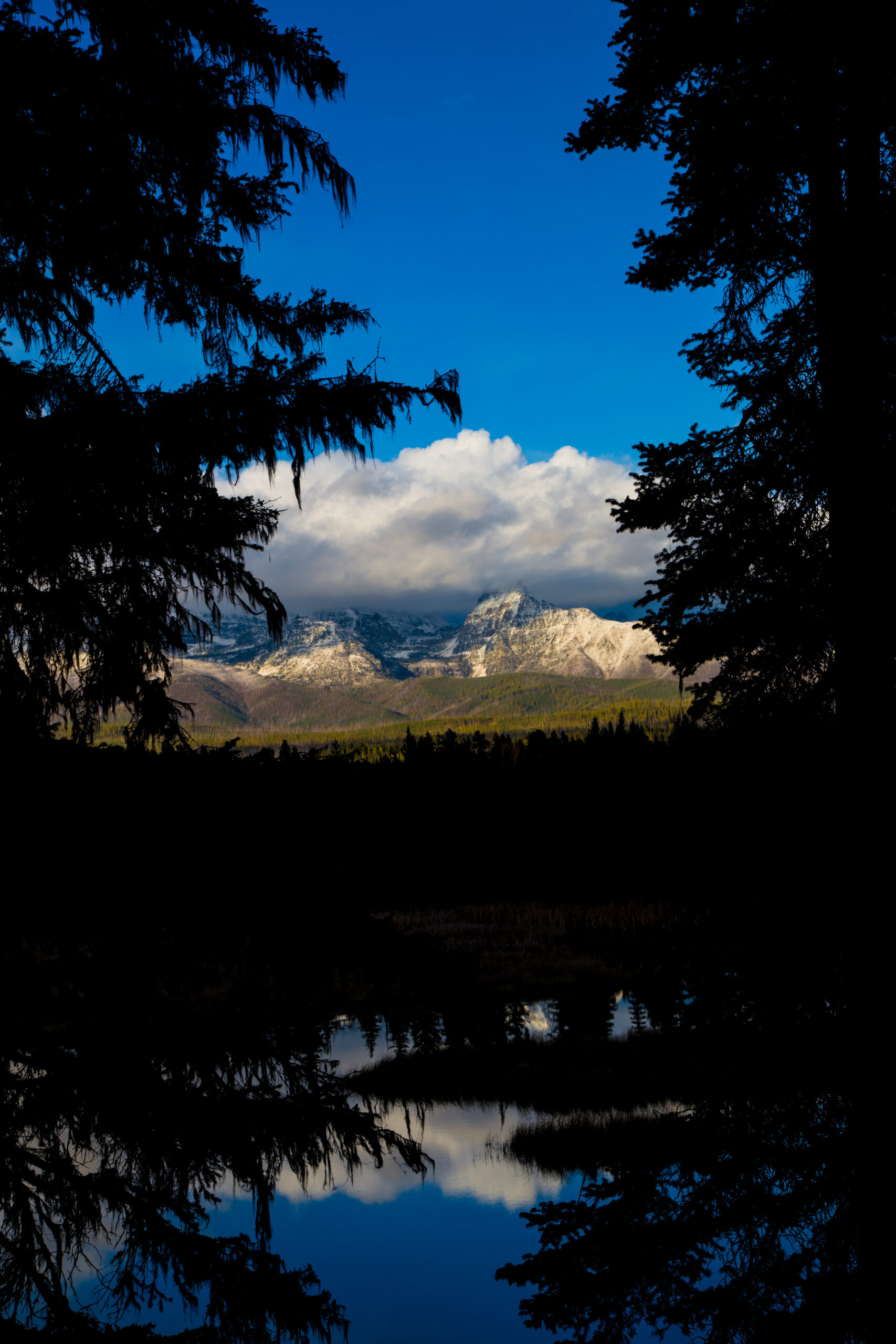
![]()
Seeking Mineral Rights
In the mid-1800s, a series of treaties reduced the Blackfeet Nation by millions of acres.
When the Montana Gold Rush began in 1862, the traditional Blackfeet world was deeply disrupted. In just a few short years, over 15,000 miners were exploring and prospecting in and around the Blackfeet Reservation. Sacred places and traditional hunting grounds were soon overrun by miners who introduced diseases that the Blackfeet had no resistance to. Scarlet fever killed more than 1,000 Blackfeet in 1864.

Prospectors Mining for Gold
During 1865, harsh times and absolute desperation forced a small group of tribal leaders to reluctantly sell 2,000 square miles of land south of the Missouri River to the U.S. government for $1 million. This treaty was never ratified by the US Government.
Then in 1887, Congress passed the Dawes Act, whose objective was to force the assimilation of First Nations tribespeople into mainstream US society by annihilating their cultural norms and social traditions. This was carried out by effectively stripping an additional 17 million acres from the Blackfeet through a process that sought to distribute reservation lands as allotments to individuals to try and force them to farm.
This caused Blackfeet life to deteriorate dramatically. The social structure of the tribe was threatened and began to weaken; many Blackfeet were simply unable to adjust to this agricultural existence, while others were swindled out of their property. The Blackfeet descended into disease, poverty, and despondency.
In 1871, the US Government decided to end the process of formal treaty-making with all First Nations tribes. And therefore would no longer recognize nor negotiate with them as though they were sovereign nations. Instead, all dealings with the Indians were to be handled through the issue of Executive Orders and Acts of Congress, completely without input and council of anyone from the First Nations, especially the Blackfeet.
In 1872 and 1873, President Ulysses S. Grant issued Presidential Executive Orders to further reduce the size of Blackfeet lands while simultaneously creating a larger reservation that was to be shared by multiple tribes; the Blackfeet, Piegan, Bloods, Gros Ventres, and River Crows… Defined by an Act of Congress in 1874, this new reservation had territory that had already been designated as Blackfeet lands by the 1855 Treaty.

Map of 1883 Illustrating Shared Reservation Lands, with the Unapproved Adjusted Boundary
However, on setting the 1873 boundaries of this new reservation, the US Government shifted the southern border of the original Blackfeet reservation some 200 miles to the north, without ever consulting the Tribe. Never offering any form of compensation to the tribe, they then opened these longtime Blackfeet lands to a flood of prospectors and settlers. This created more difficulty, conflicts, and distrust of the US Government.

![]()
The End of an Era
The last buffalo hunt took place in 1882, south of the Sweet Grass Hills. The predicted extinction of the buffalo had finally come true. The Blackfeet were unable to depend on promised government annuities for their survival because these funds and resources were controlled by corrupt Indian Agents.
Thousands of hungry tribespeople sought help from the Indian Agency, but rations promised by the US Government were not made available which contributed greatly to the Blackfeet suffering.
Many Blackfeet, Already Weakened… Literally Starved to Death.


A Terrible Time of Starvation on the Blackfeet Reservation
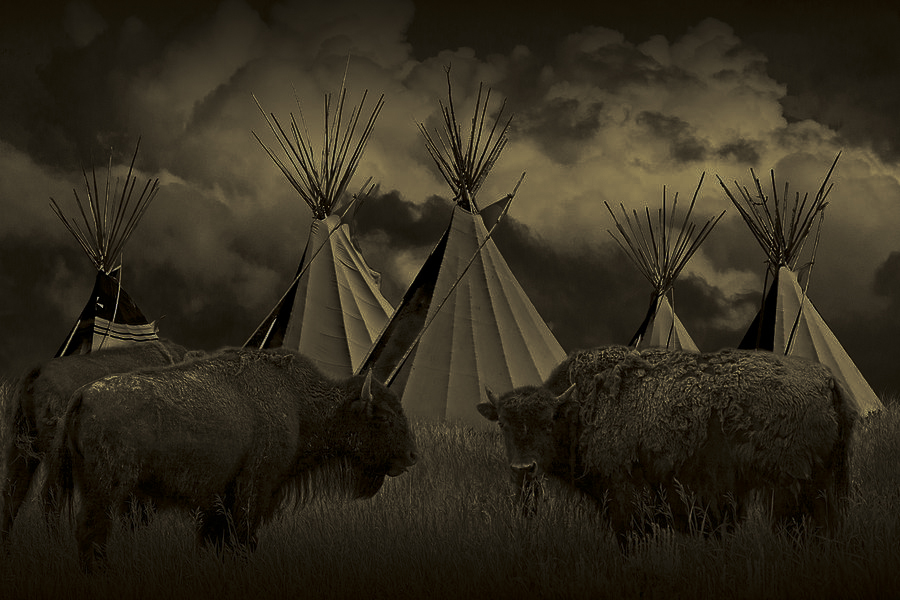


Mounds of Buffalo Skulls – Mostly Shot for Sport and to Eradicate Buffalo as a Food Source.
Starvation Winter
The horrendous and brutal winter that followed is still today known as “Starvation Winter” by the Blackfeet, the people suffered horribly. The hilltop ridge located up behind the old Indian Agency is now called “Ghost Ridge” because so many people that slowly and painfully died were buried there during those troubling times.

Since the time of the first treaty in 1855, a stunning 80 percent of the Blackfeet Piegan population had died.

Moving camp.
During the winter months of 1883-1884, nearly 600 Piegans, a quarter of the tribe, died of starvation. The starvation was directly caused by the extermination of the buffalo. The decimation of the buffalo herds caused a significant change in the traditional food supply and altered the pattern of life in the Great Plains region.
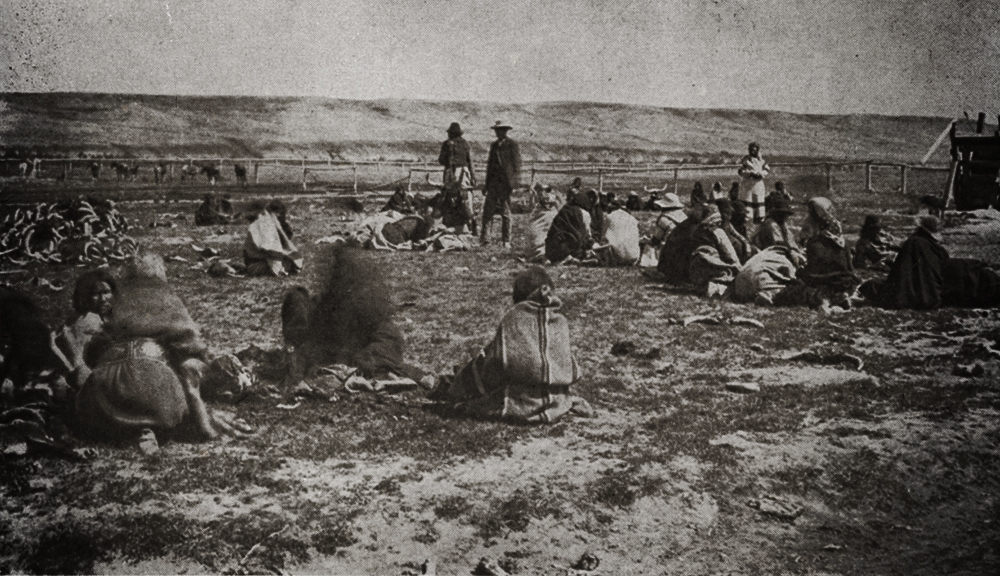
In 1830, according to a conservative estimate, some forty million bison were grazing the plains of the American West. A mere 40 years later, in spite of constant hunting by both Indian and white, the number remained nearly the same. Then in 1871, a tanning process was developed that could quickly convert buffalo hides, for which, until then the hides had limited demand as tribal robes. This new quick tanning process could turn the hides into tough and durable leather, suitable for machine belts, and the demand for them· became insatiable. Twelve years later, the buffalo was virtually extinct, and an unparalleled slaughter now occurred.
The suddenness of change from a natural bounty to the complete extermination of a traditional food supply and a consequent pattern of life caught all the Western areas unprepared, but its effects were particularly dramatic to the Blackfeet. In all the Great Plains the buffalo in the Blackfeet lands, in an area from the Canadian border to the Judith Basin, were the last to go. Although it became apparent after 1879 that they would not last forever, no flexible plan had been devised in the cumbersome machinery of government to meet and counter this eventuality. Warnings, however, were not lacking.
Each year, after 1880, Indian Agent John W. Young, from his Agency then on Badger Creek, a few miles south of the present Browning, drew attention to the situation, with urgency, in his annual reports. He pointed out that because of the scarcity of game, fewer Indians were going off on the hunt and more and more were becoming dependent upon the Agency for their weekly issue of rations. Provision was made for a small herd of cattle and the importance of teaching the Piegan Blackfeet crop-raising was stressed to prepare for a new food supply. But the cow herd was too small, crop conditions discouraging, and the time too short to change centuries-old modes of existence. By 1883 the buffalo were gone and the Blackfeet became destitute.
The great roving herds of buffalo were gone forever, and Blackfeet life would never be the same
![]()
Taking The Land
Here at the end of the 1800s, the Blackfeet Nation was struggling. Their population, now stripped of guns and weapons, had lost their ability to hunt game and care for themselves. The Blackfeet people were decimated by disease and the few survivors were weakened from starvation. The Buffalo herds they had depended on for thousands of years were gone and their tribal reservation lands were under constant pressure from an onslaught of outsiders, continuously trespassing seeking to prospect for minerals.
During the gold rush fever of the late 1800s, the Blackfeet Nation tried to resist growing intrusion onto their Reservation Lands by prospectors. Powerful voices in Washington D.C. lobbied the US Government for the removal of the Blackfeet entirely, by whatever means, even force, and to take their lands and mineral rights.

Grover Cleaveland – Twenty-Fourth US President from 1893-1897 (D)
President Grover Cleaveland resisted these efforts, and determined to create a good legacy for himself, he opened fresh negotiations with the Blackfeet. This time the US Government would try to purchase land and mineral rights from an area that most government officials believed the Blackfeet did not care much about.
In 1887, the US Congress sent a committee to the Blackfeet Agency in Montana to negotiate for tribal lands. An agreement was signed by the US Government and representatives of the Blackfeet, Gros Ventre, and River Crow. This treaty took another 17.5 million acres of tribal lands, including the Sacred Sweet Grass Hills.


Sketch of US Congress Meeting in the late 1800s
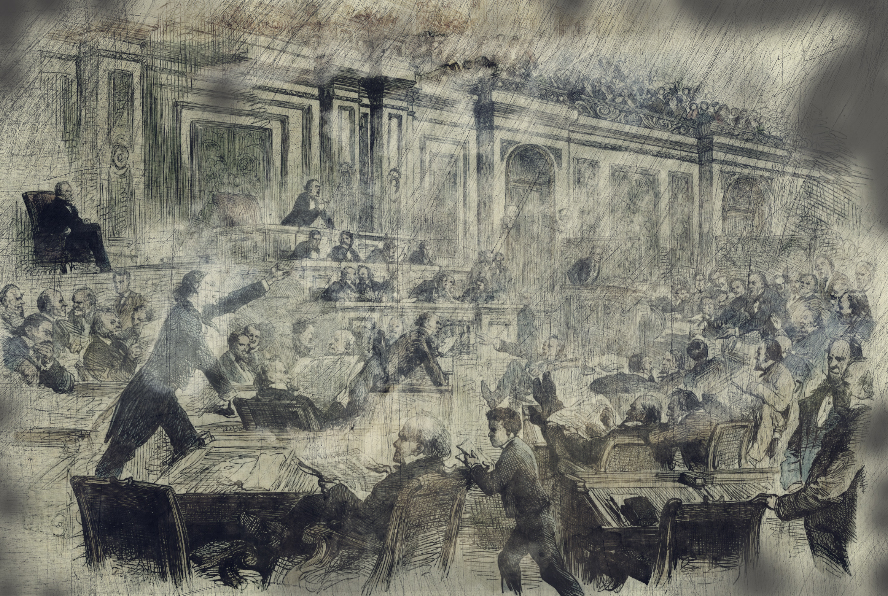
The Treaty of 1887
The new Blackfeet reservation established by the 1887 Treaty reduced their tribal lands to 1.76 million acres, stretching from the Rocky Mountains Front, east to the Cut Bank Creek, north to the Canadian border, and south to Birch Creek. The US Government believed that this newly established reservation boundary would provide an adequate land base to cover all that the Blackfeet tribespeople needed to survive on their lands.
In return for selling this land, the Blackfeet would receive $150,000 annually for a total of ten years to cover the purchase of livestock, farming and ranching equipment, goods, clothing and subsistence, education, medical care, and shops, schools, and homes. In addition, the treaty provided that employment preference for any federal jobs on the reservation would be given to Blackfeet tribespeople living on the reservation.
The Treaty of 1887 Also Provided for Land Allotments
In early May 1888, Congress ratified and confirmed the 1887 Treaty. But Congress was adamant in stipulating that money provided by this agreement was to be used only to supply the Blackfeet with the means to assimilate and survive in the modern world
This would be the last agreement between the Blackfeet and the US Government until the 1895 treaty
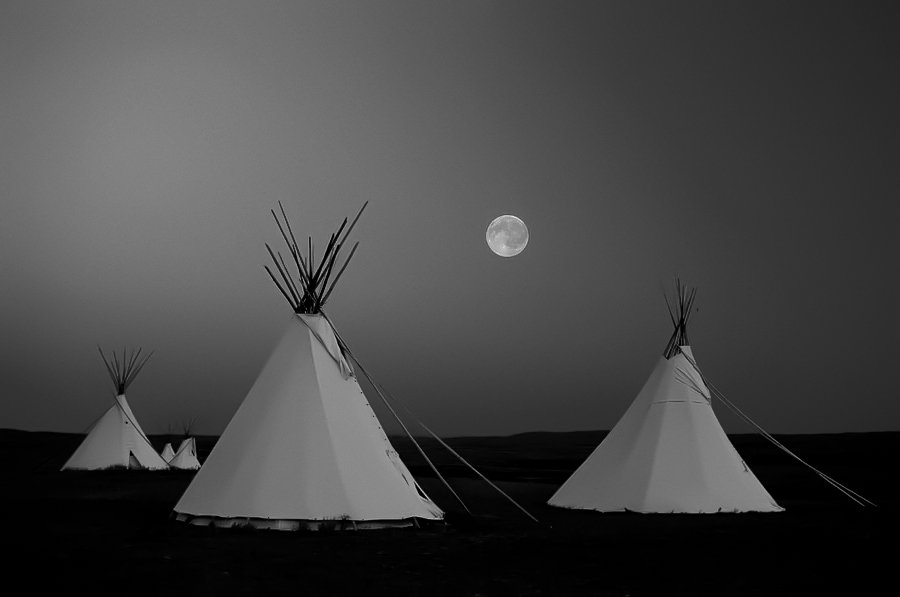

![]()
1895 Treaty Negotiations
In January of 1895, the US Governments Commissioner of Indian Affairs, Daniel M. Browning, ordered a meeting with the leading men of the Blackfeet Nation. During this meeting, it was explained, in a manner that made the Blackfeet believe they had little choice but to agree, that the US Government intended to purchase the mountainous, western wilderness portion of the Blackfeet Reservation for its mineral resources.
Lands the US Government felt the Blackfeet did not need
The Indian Commissioner requested the Blackfeet leaders choose a time to hold negotiations with the other Indian Commissioners that would be sent by the US Government to negotiate a purchase for these lands. These requests were considered demands and caused confusion, despair, and anger by a peoples already profoundly damaged by past actions and now reduced to less than 1,000 tribespeople by disease and starvation.

Indian Commissioner meeting with Blackfeet Leaders
After discussing the matter in a tribal council the Blackfeet decided to negotiate with the US Government. They selected the month of September to meet with the Indian Commissioners, as this would be after the completion of various sacred Okan Ceremonies that are held in the late summer months.
The Blackfeet also requested that their longtime friend, George Bird Grinnell, be one of the official Indian Commissioners negotiating on behalf of the US Government. They felt that, as a longtime friend of the Blackfeet, his involvement would help to ensure that the US Government would treat the Blackfeet fairly.
Congress approved President Cleaveland’s plan to negotiate with the Blackfeet Nation through the Indian Appropriations Act of March 2, 1895. This authorized the Secretary of the Interior to hold talks with both the Blackfeet and separately with the Belknap tribe, to purchase portions of both their respective reservations.


The Indian Commissioners
George “Bird” Grinnell, William C. Pollock, Walter M. Clements

George Bird Grinnell
A meeting was scheduled in early September of 1895 to begin formal negotiations between the Blackfeet and US Government representatives. The 3 Indian Commissioners arrived in late August of 1895. But before the start of any formal negotiations, the Blackfeet insisted that the 3 Indian Commissioners visit the western portion of the Reservation and see firsthand the land, and mineral wealth that existed there.
As per the request of the Blackfeet leaders, 2 Indian Commissioners along with their Blackfeet guides spent 2 weeks exploring select areas they felt exhibited positive signs of a potential abundance of minerals. But in In keeping with their Congressional instructions, they also were inspecting the land with intentions of setting new reservation boundaries, that would effectively delete all lands containing minerals from the Blackfeet Reservation.
Simultaneously, the Commissioners sought to leave as much of the reservation’s timber and grazing lands as intact as possible. Therefore, this 2-week exploration was carried out not only to satisfy the Blackfeet concerns but mostly to comply with the Commissioner’s true underlying mission.
Blackfeet Representatives

Attendees of the 1895 Negotiations
In the photo above are Blackfeet representatives from the Blackfeet Agency. Along the back row: White Calf, George Steel (US Indian Agent), Tail Feather Coming over the Hill, White Grass, Joseph Kipp (a Mandan Trader). Along the front row: Four Horns, Little Bear, Running Crane, Little Dog, and Little Plume.
The Blackfeet population on the reservation at this time numbered less than 1,000 people, and 381 were males. From these, a select committee of 35 Blackfeet and mixed-bloods was chosen to represent the Blackfeet Nation and conduct the negotiations regarding the sale of lands on the Blackfeet Tribal Reservation.
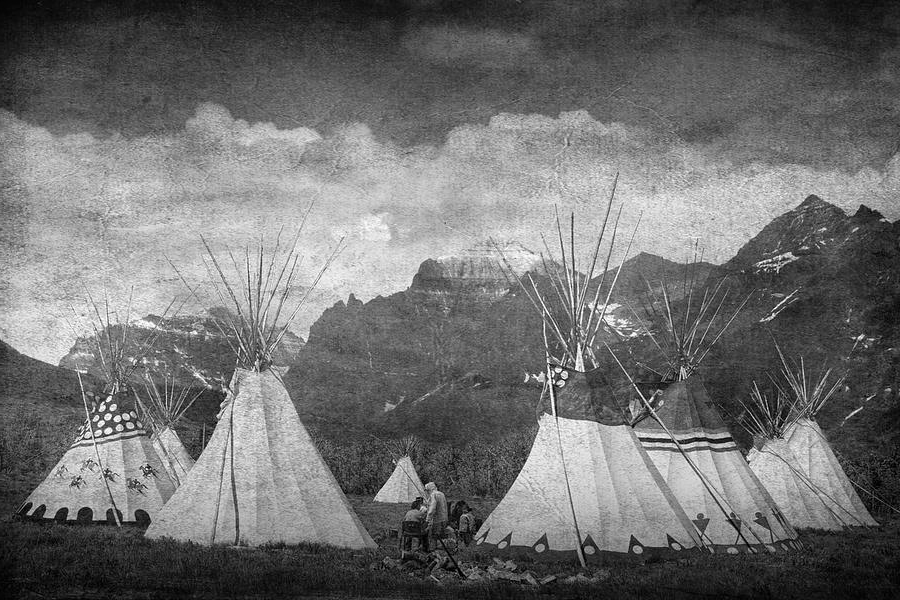
![]()
The Process of Negotiation

The negotiations took place in the Indian Agency And Hospital Building on the Amp Ska Pi Pikuni Blackfeet Reservation. The 3 Indian Commissioners met with the 35 selected representatives, made up of full-bloods and mixed-bloods from the Blackfeet Nation. Working through 3 different interpreters translating Blackfeet to English and visa-versa, the proceedings from the negotiations were memorialized and made into the official treaty report to be later turned over to the US Congress and President Grover Cleaveland for ratification.
All of the 35 Blackfeet representatives were offered time to speak their minds and to ask questions of the Indian Commissioners. A great deal was at stake from the Blackfeet perspective, after all, they did not approach the US Government offering to sell the land, so they felt that the US Government must think the land is highly valuable, otherwise, why would they waste all this time and effort spent trying to purchase the land from the Blackfeet Nation, especially since it was not for sale, to begin with. So the Blackfeet sought to negotiate and receive a fair price.
The main premise of the treaty from the US Governments perspective was to gain access to lands that they thought would be highly valuable for mining purposes. To the Blackfeet, these lands were still important but the US Government was promising them by treaty, that the Blackfeet would always be able to hunt for food, fish, cut timber to sustain themselves, and continue to hold their sacred ceremonies in these lands…
For As Long As They Remained Public Lands
Financial considerations were a crucial factor. The few survivors left in the Blackfeet Nation were now in dire straights economically, so the prospect of receiving funds that could mean the difference between survival or not was compelling and had to be carefully considered. Many lively talks were held between the Blackfeet representatives themselves, with the 3 translators trying hard to keep up with the discussions, to accurately record every word spoken by both sides. It was a difficult and frustrating process for both sides.
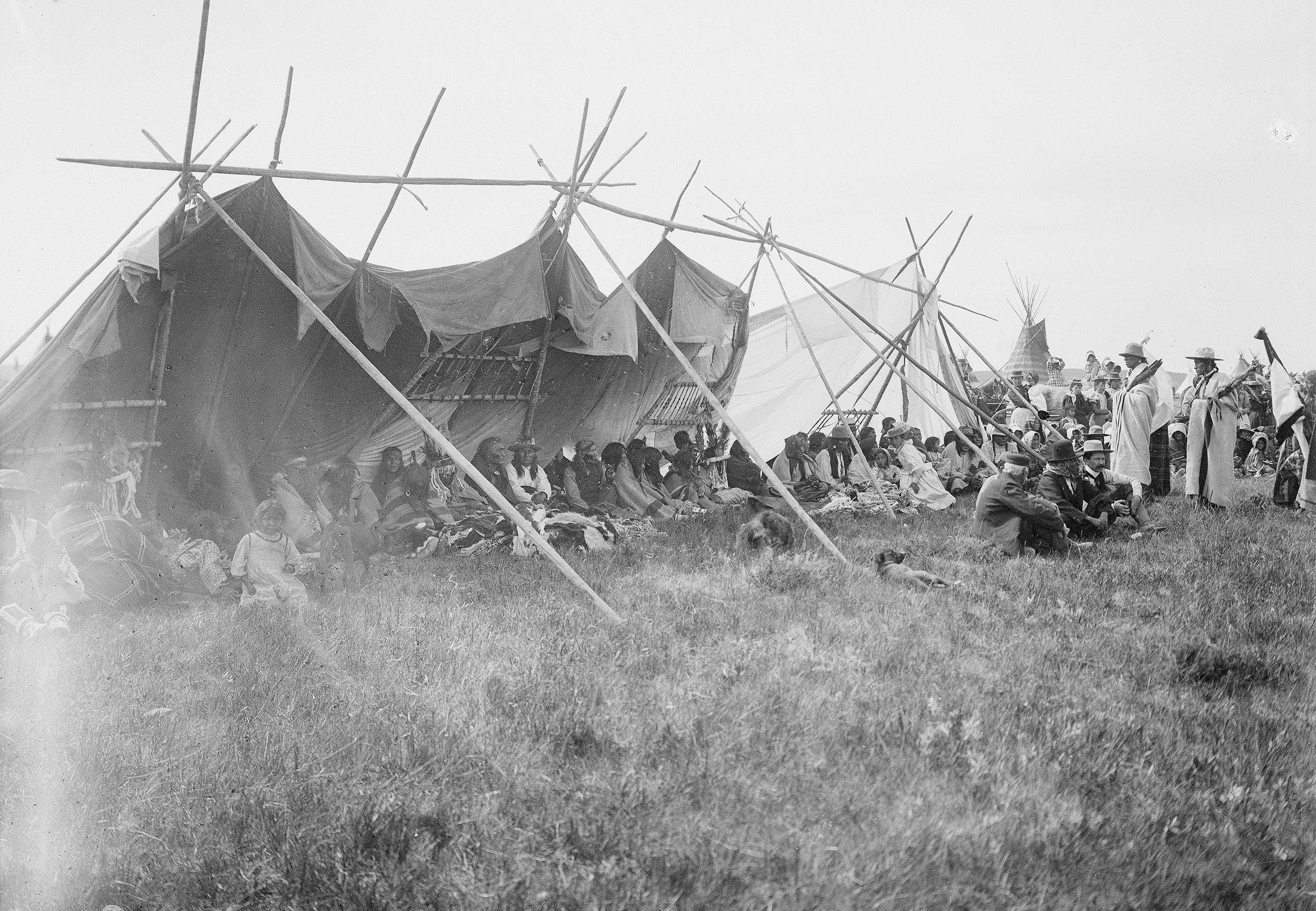
2 discussions were held; first on Sept. 21st, then again on Sept 23rd

Impassioned Speaches
The meetings were cordial but there was an underlying tension between the Blackfeet representatives over both the valuation of the land, and whether the land should even be sold at all. Many poignant and moving speeches were made and lively exchanges were had by a number of the Blackfeet representatives such as;

White Calf, Little Dog, Curly Bear, Three Suns, Little Bear Chief, Bull Shoe, Little Plume, Middle Calf, Mad Wolf, Four Horns,
Running Crane, Mountain Chief, Tearing Lodge, Wolf Tail, and Running Rabbit
The Blackfeet representatives insisted they receive $3 million for the land ( $91.5 million in today’s money). The 3 Indian Commissioners refused, stating that the US Government would not agree to pay any more than $1 Million ($30.5 million in today’s money). After much discussion over the two days, it became apparent that neither the Indian Commisioners nor the Blackfeet Representatives would budge from their position on the subject. Finnaly, it was agreed by both sides that things were at an impasse. With neither side willing to change their opinion on overvaluation…
It was decided: The Blackfeet would not sell the land, everyone said goodbye and parted ways…


A Change of Heart
The evening after this last meeting between the Indian Commisioners and the Tribal Representatives was very lively indeed. The Blackfeet called together a special tribal council to discuss a path forward, It was decided that they would try secure a good price for the land and a path that would lead to a good outcome for the Blackfeet tribespeople. Though it meant a compromise, they would make a plan that would help the tribe to recover and move forward.

Holding Tribal Council

The council met for hours late into the night to discuss the path they should follow. And then they met again the following day… After many moving speeches and heated interactions going back and forth between the men and women, they came to a conclusion. Once it was agreed, late in the afternoon they sent word to the US Government representatives through their Indian Agent George. Steel, that they wished to meet once again on the following day.
On Wed. September 25, 1895. The 35 Blackfeet Tribal Representatives once again met with the 3 Indian Commissioners and interpreters. The Blackfeet would agree to sell rights to mine top-surface-minerals from the land for $1.5 Million ($45.8 Million in today’s money). But only with the conditions, that they would retain the rights to continue to hunt, fish, cut timber, and hold sacred ceremonies as long as the lands remained “public lands“. A concept the Blackfeet did not fully understand.
Thinking the talks had been unsuccessful, upon hearing the news of this change of heart by the Tribal Representatives, the Indian Commissioners were very happy to meet again and immediately accepted the offer. However they insisted on a condition that the money would be paid to the Blackfeet by annual installments over a period of 9 years, with $300,000 due the first year, and then $150,000 annually over the following 8 years.
The negotiations were then concluded and the two parties adjourned until the following day so that the US Representatives could type out the official treaty document, to be signed by all 381 men in the tribe.

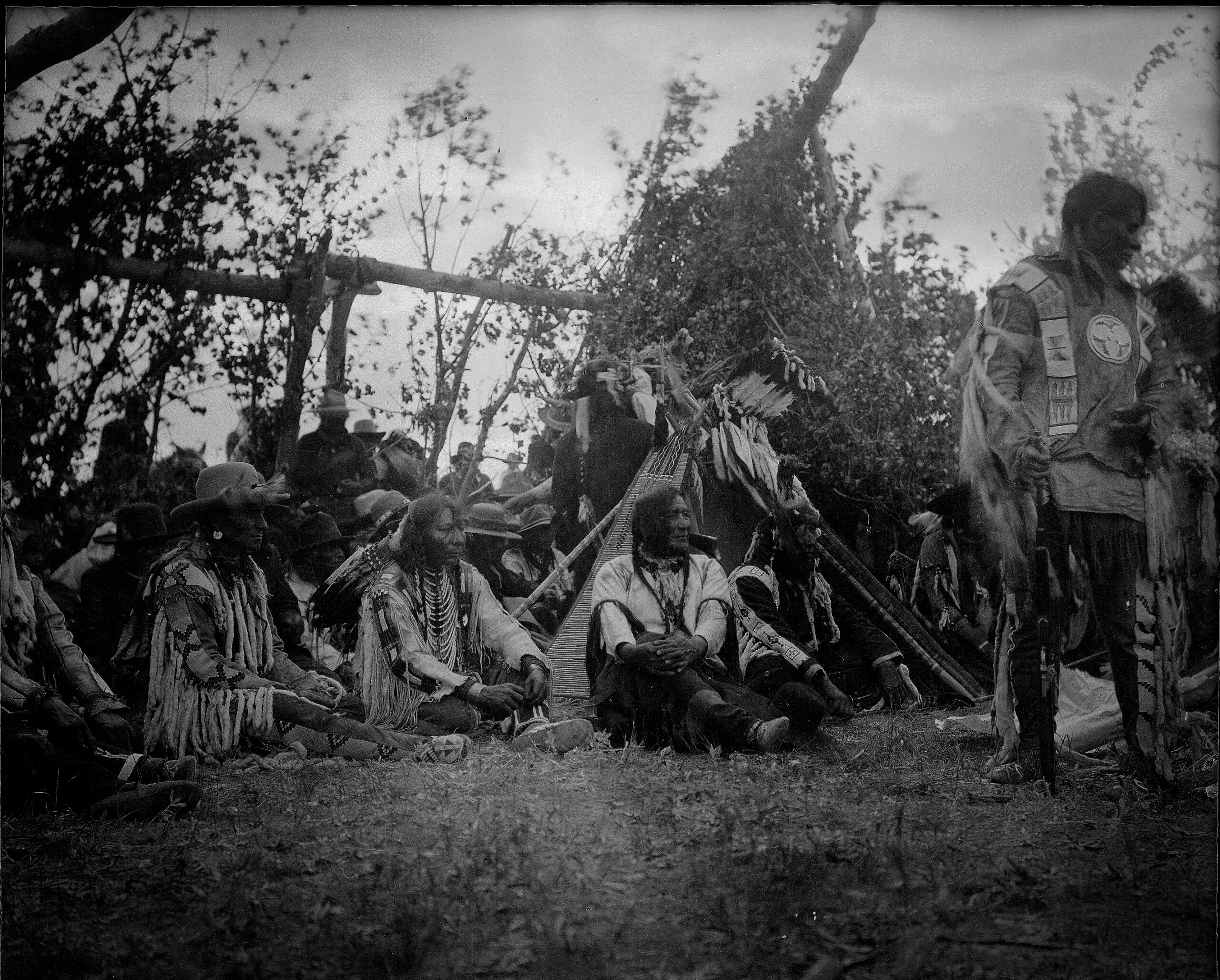
Treaty Aftermath
The result of the 1895 Treaty was the reduction of Blackfeet lands by another 800,000 acres. These lands were in an area the Blackfeet called the “Backbone of the World”, and were considered spiritually sacred. Included was the area known as the Badger-Two Medicine, as one of the Blackfeet’s most revered places, this is the setting of their traditional creation story. Important to understand is that the Blackfeet deeply believed they were promised by treaty, that they would always be able to use the lands as they had forever.
The Government’s stated reason for acquiring the land in the 1895 Treaty was to open the area to mineral exploration. The land was legally opened to prospecting and settlement on April 15, 1898. On that date over 500 people rushed out across the 800,000-acre area to stake out their mining claims. But, after a very short period of only a few months, it became clear that few minerals were being extracted from these lands. The entire prospecting boom would, for all intents and purposes, be over by November of 1898! A total bust.
The Mines Played Out
The newly opened land contained many valleys, but it was in the Swiftcurrent Valley that mining efforts were most concentrated. In addition to the various claims and mines, an actual town grew up in the valley. Named Altyn, it contained many of the amenities of civilization, including several saloons and a dance hall. However, the mining boom never panned out and by 1903 most of the mining activity, as well as the town of Altyn, had died out, leaving a ghost town, drowned by water levels raised by the Lake Sherburne dam.
The town of St Mary was also created during this short mining boom. Today this small community alongside Saint Mary Lake on the border of the Blackfeet Reservation is known as the eastern entrance to Glacier National Park.


The Ghost Town of Altyn Montana Before the Dam Was Built, Covering the Town Underwater
By 1910, for all intents and purposes, mining and oil exploration efforts were completely finished. The earlier hopes expressed about the value of mineral wealth in the region had proven completely inaccurate, and the United States now held title to nearly 800,000 acres of harsh yet magnificent, mountainous wilderness.
However, there were undercurrents at play. As early as the 1880’s there were many other groups interested in these lands. These were conservationists, who wished to protect these lands from being exploited solely for private gain. They saw the lands were rich with beautiful scenery and natural history. And they believed the entire area should belong to the nation as a whole, as either wildlife preserves or a national park.
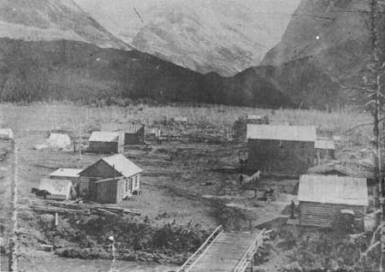

The Push for a National Park
As early as 1883, before the 1895 Treaty, there were calls for the US Government to remove the lands from the Blackfeet so they could be made into a protected area. When the 1898 mining boom never materialized, the members of this conservation movement felt it was time to make their move. The US Government already owned the land, and little damage had been done by the unsuccessful mining operations.
In their minds, It would simply be a matter of the US Government changing the status from public land to that of a national park, a precedent set by the earlier 1872 establishment of Yellowstone National Park, and the subsequent creation of several other national parks. The push to create the park gained supporters.
In the early 1880s the owner and editor of the popular magazine “Forrest and Stream”: George Bird Grinnell, had become interested in the plight of the Blackfeet Nation. During the Blackfeet’s horrendous starvation winter of 1883-84. His sustained efforts helped to pressure the Indian Bureau into helping, somewhat.

George Bird Grinnell’s Forest and Stream Magazine 1894
After visiting the Blackfeet and extensively exploring the Rocky Mountains on the western side of the reservation, Grinnell published 14 rapturous articles in Forest and Stream, describing in great detail his adventurous journies into the Rocky Mountains and surrounding wilderness as guest of the Blackfeet Nation. His efforts greatly impressed the Blackfeet, and they thanked him for all of his help. They considered Grinnell as their friend, bestowing on him an honorary Blackfeet name, Pinutoyilstsimokan, or Fisher Hat.
It seems that when the 1895 treaty negotiations happened, there were major underlying ulterior motivations already at play to create protected wilderness spaces from these Blackfeet lands. And while these efforts are seemingly noble and lined with wonderful environmental intentions, the apparent lack of full disclosure with regards to the possibility that the Blackfeet could lose long-term access to these lands is of concern.

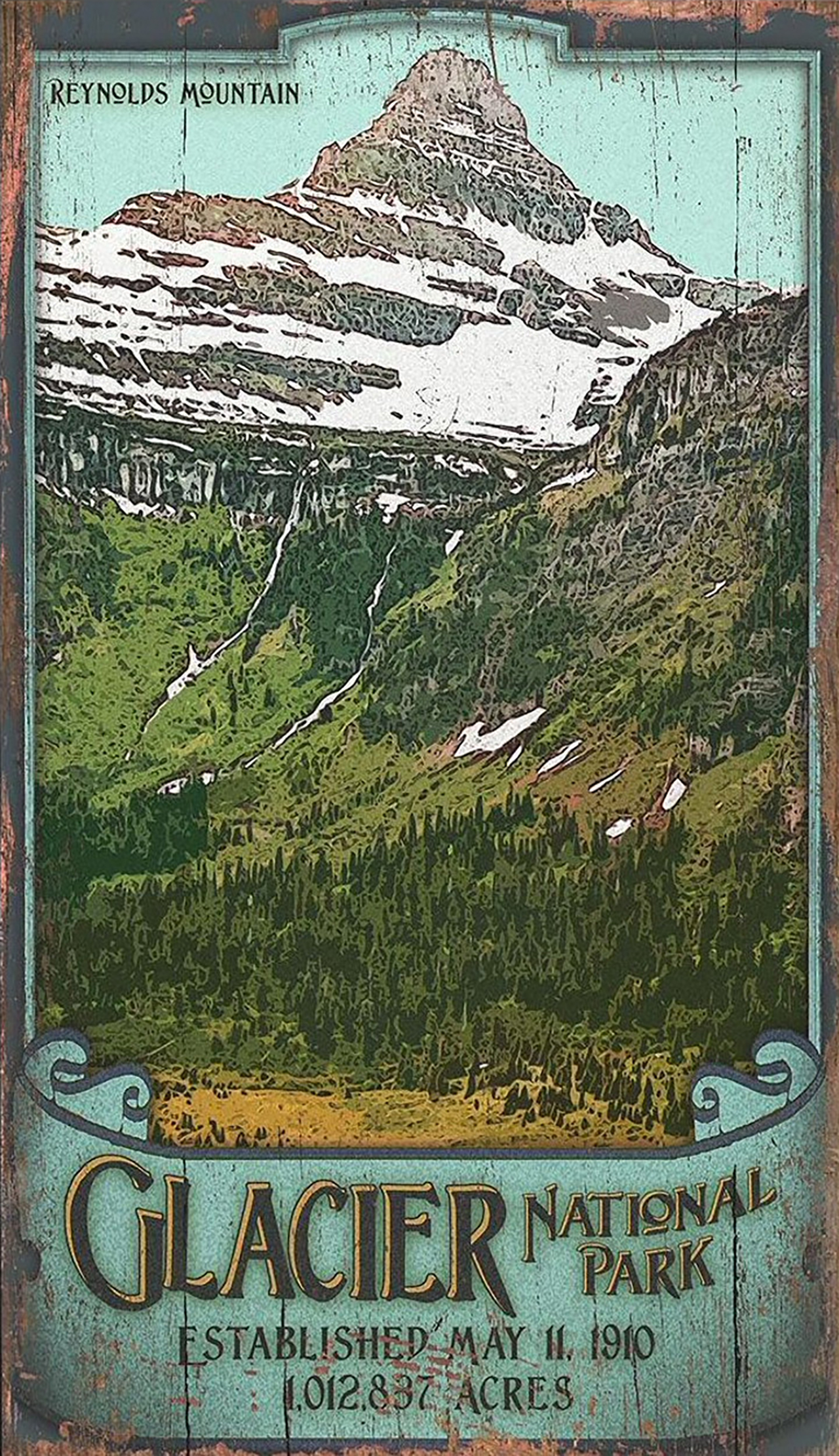
A Questionable Friendship
It seems the very person that the Blackfeet so depended on to help guide them through this negotiation process, George Bird Grinnell, whose name adorns both a prominent mountain and glacier located within Glacier National Park, may have either intentionally or unknowingly worked against the Blackfeet interests.
In September of 1901, Grinnell wrote a very popular article entitled, “Crown of the Continent”, published in Century Magazine. He wrote in glowing terms of the tremendous beauty of the ceded Blackfeet lands. Then, at the conclusion of the article, Grinnell called for placing these lands in a national park. This was the first time George Bird Grinnell had publicly put forth such a proposal. But his ideas struck a national cord.
As a result, many renowned conservations began to publically advocate for the formation of a national park, to be created from the original Blackfeet lands ceded in the 1895 Treaty. Folks like well-known preservationist John Muir and his friend, the naturalist President Theodore Roosevelt, took a special interest.

George Bird Grinnell and Theodore Roosevelt
In Roosevelt, Grinnell found an aggressive, courageous, and politically tuned ally for his conservation efforts. They became friends and cooperated in this endeavor for the next 35 years. In 1887, realizing the need for an influential national organization, Grinnell and Roosevelt helped to found the Boone and Crockett Club. Members would include many of the country’s wildlife and conservation leaders, all of whom would be influenced by their leadership for the next half-century.

President Theodore Rosevelt with Conservationist John Muir
After becoming president in 1901, conservation of wild lands increasingly became one of his main concerns. Roosevelt used his authority to protect wildlife and public lands over the course of his two presidential terms, first by creating the United States Forest Service. Then, by the establishment of 150 national forests, 51 federal bird reserves, 4 national game preserves, 5 national parks, and 18 national monuments.
In 1903, President Theodore Roosevelt issued Proclamation 501, consolidating the Lewis and Clark Forest Reserve and the Flathead Forest Reserve into the Lewis and Clark National Forest Reserve. Important to the Blackfeet Nation, this proclamation included the lands ceded to the US Government in the 1895 Treaty.
However, most importantly, President Rosevelt’s proclamation 501 contained specific clauses stating that the rights of the Blackfeet, as outlined in the Agreement of 1895, would remain in place and protected.
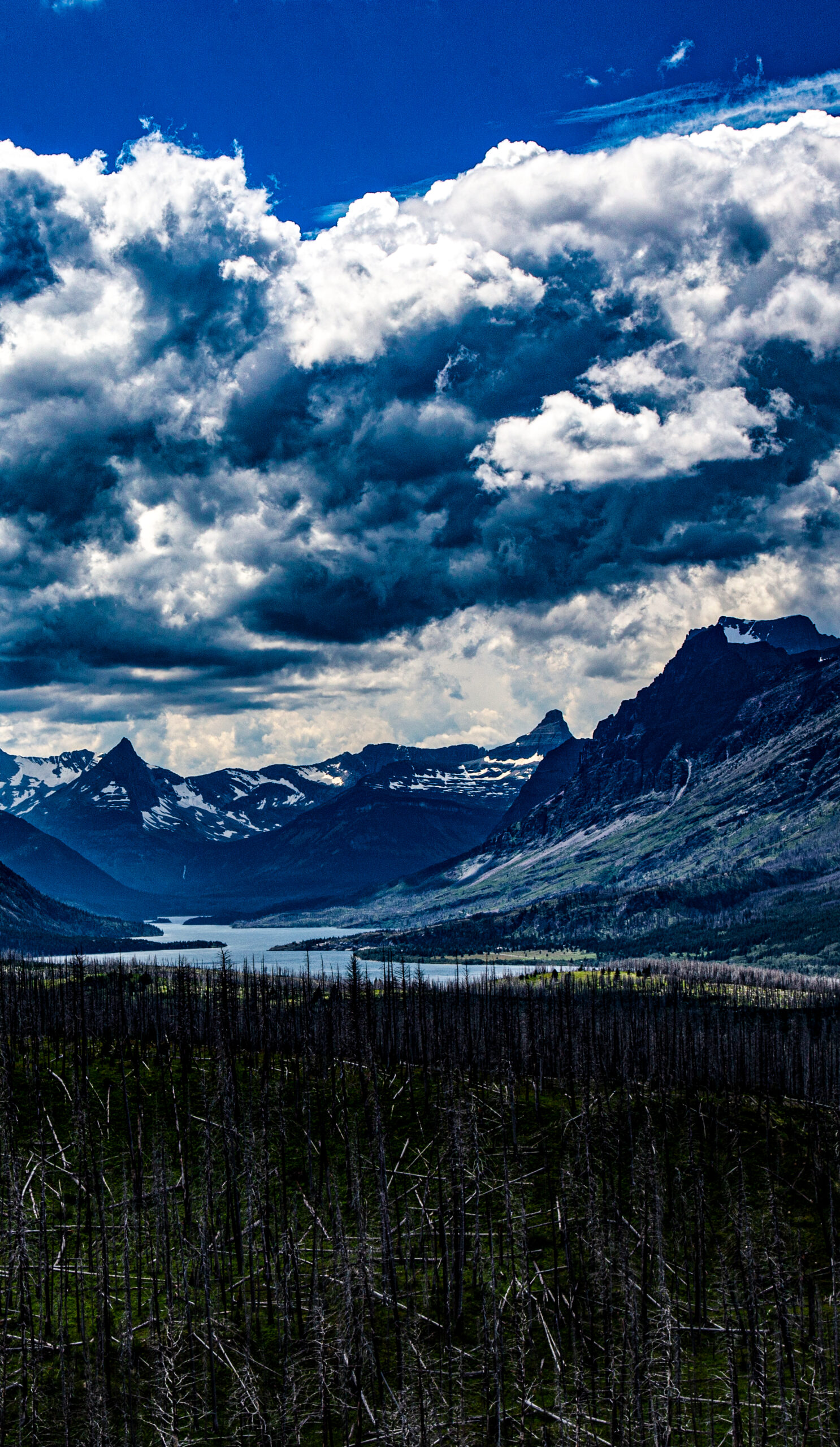

Glacier National Park
Over the next few years, preservationists began pushing for the creation of a national park in these lands. George Bird Grinnell again tried to enlist the Great Northern Railroad to this cause. The owner, James J. Hill, realized the value that a national park would have, sitting right north of the mainline of his fledgling railroad. Therefore, Hill used his considerable influence and friends to push for the creation of Glacier National Park.

Through the lobbying efforts of Grinnell, Hill, and many others, and after much deliberation in both the US and Montana Governments, Glacier National Park was signed into existence by President William Taft on May 11, 1910. Following this Montana ceded all legal jurisdiction over the parklands to the US Government. This granted exclusive jurisdiction of the park to the United States, which was accepted and ratified in 1914.

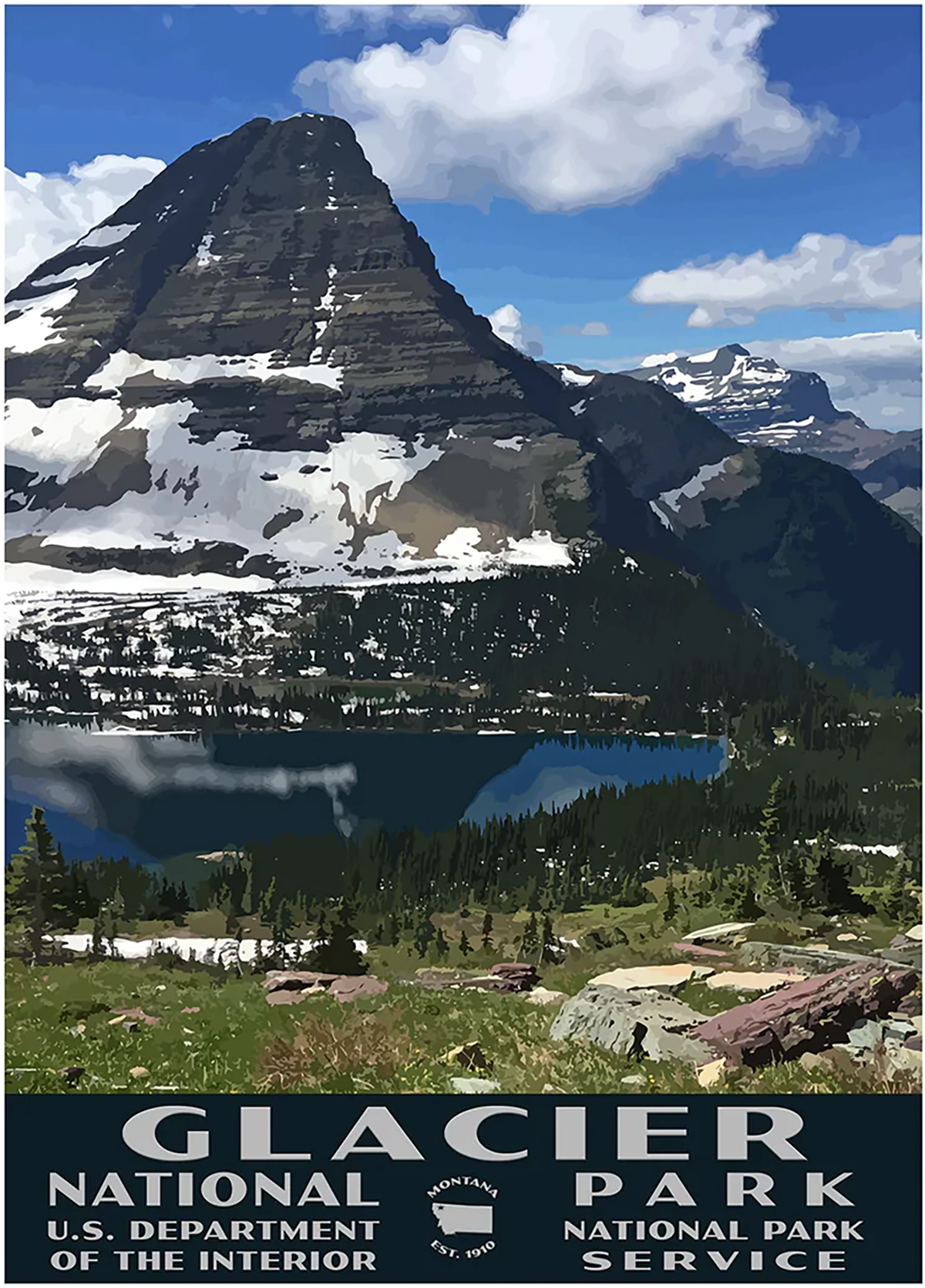

Up until this time, the Blackfeet had continued their access to their original territory, as outlined and protected by the 1895 Treaty. They hunted, fished, cut, and removed timber for lodging and firewood, and held sacred ceremonies in the same ancestral lands they had for hundreds of years.
A Promise is Broken
“By the agreement ratified by Congress June 10, 1896, the Indians reserved the right to go upon any part of the lands ceded to the United States for the purpose of cutting and removing timber for agency and domestic purposes, including personal use, and to hunt on the lands and fish in the streams in accordance with the game and fish laws of Montana so long as the ceded lands remained public lands of the United States.” The Treaty of 1895.
The Blackfeet understood that these rights existed for as long as the land remained public.
For the next few years, things began to get slightly better for the Blackfeet, the tribespeople was beginning to heal as a nation and, learning how to modernize and coexist with the growing popularity of both the brand new park and their own tribal prominence as visitors to the park discovered Blackfeet Culture.
US Government-First Nations relations in the years between 1871-1928 are called the Era of Allotments and Assimilation. During this time period, several major laws were passed, including the Indian Department Appropriations Act in 1871, the General Allotment Act of 1887, and the Indian Citizenship Act of 1924. These laws were designed to “Finally put an end to the US Government’s Indian Problem“

Calvin Coolidge with First Nations Representatives in Washington, D.C., 1924.
Over the following decades, legal wrangling and Blackfeet tribal activism incited numerous attempts to pass favorable bills in the US Congress, and the Montana State assemblies to address the many obvious wrongs wrought upon the Blackfeet, going all the way back to the very first 1855 Treaty.
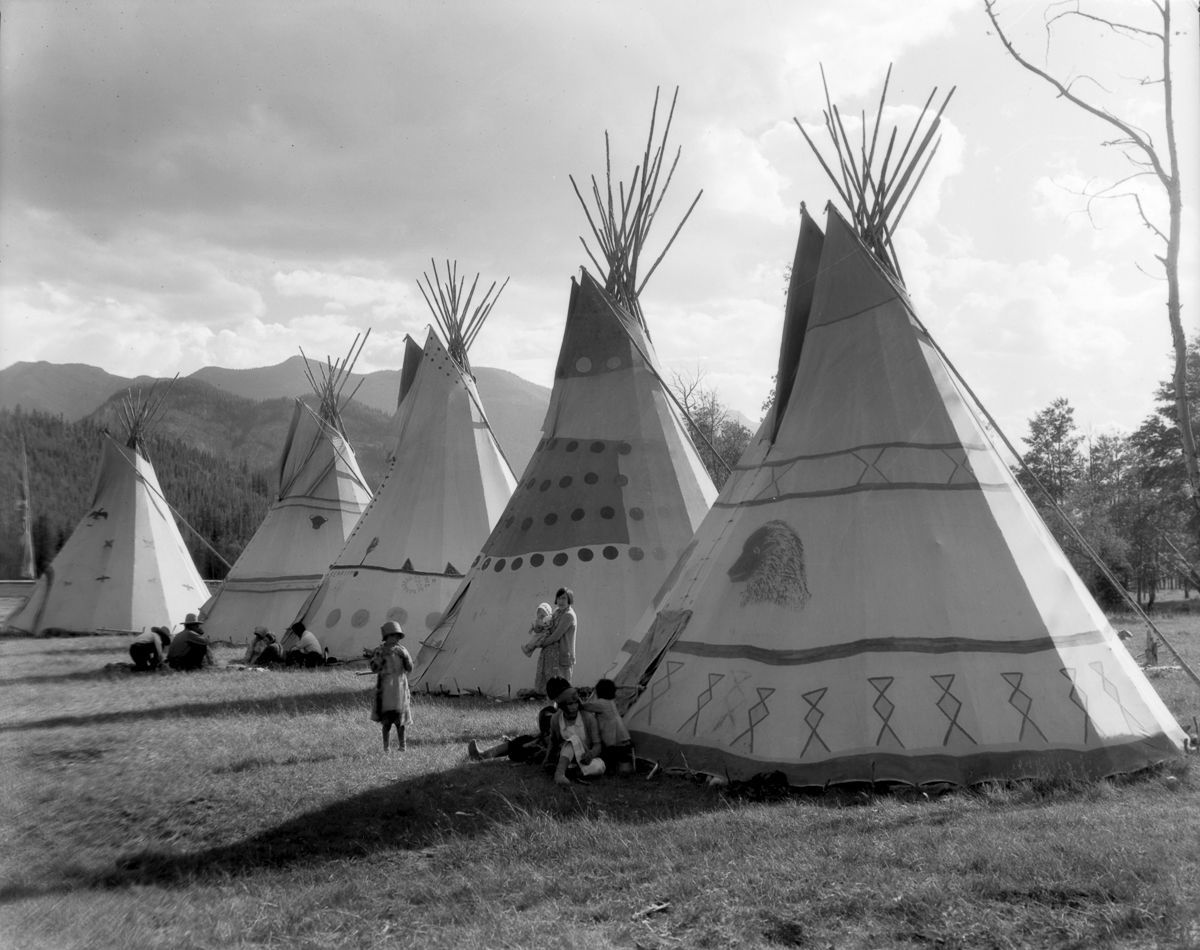
![]()
A Glimmer of Light
Of note is the case brought against Woodrow Kipp in 1973 for entering Glacier National Park without paying. His claim was that the provisions of the 1895 Treaty allow entrance to these lands as long as they are public. And of course, the US Government’s response centered around their long-standing claim that these lands were no longer public, now that they had become Glacier National Park.
In this suit, it was the claim of the Blackfeet Tribe, that “under the act of Congress passed on May 11, 1910, the defendants, took from them and deprived them of the right to cut and remove wood for agency and school purposes, and for their personal use for houses, fences, and all other domestic purposes. Took from them their right to hunt and fish, on a tract of land constituting a part of Glacier National Park, which rights have been reserved by the Blackfeet, in an agreement (the 1895 Treaty) with the defendant, which was then ratified by the Congressional Act of June 10, 1896”.
The case made its way into the US Federal Court system and was heard by Justice Russell E. Smith in Missoula, Montana on Jan. 3, 1974. The charges against Woodrow Kipp were dismissed and in a remarkable turn of events, Judge Smith ruled that “the reserved rights given the Blackfeet under the Agreement of 1895 were not extinguished by the act creating Glacier National Park.” In this decision, Judge Smith further stated… “The first problem is whether the lands ceased to be public lands of the United States…and were the problem merely one of statutory construction it is quite clear that the lands in Glacier Park would be held not to be public lands of the United States. The writing to be interpreted, however, is not a statute but an agreement (the 1895 Treaty) with an Indian Tribe. The fact that the agreement was ratified by a law of the United States does not in my opinion make the problem one of statutory construction…
All Indian treaties were ratified, and the rule of interpretation applied to them is that the treaty must therefore be construed, not according to the technical meaning of its words to learned lawyers but in the sense in which they would naturally be understood by the Indians”
Judge Smith, working from the Proceedings of the Councils of the Commissioners appointed to negotiate with the Blackfeet, then pointed out that through their understanding of the 1895 Treaty, the Blackfeet clearly intended to retain the rights over a long period of time and that the treaty fully expressed these wishes. The Blackfeet never realized their rights could be abolished at any time by reclassifying the land.
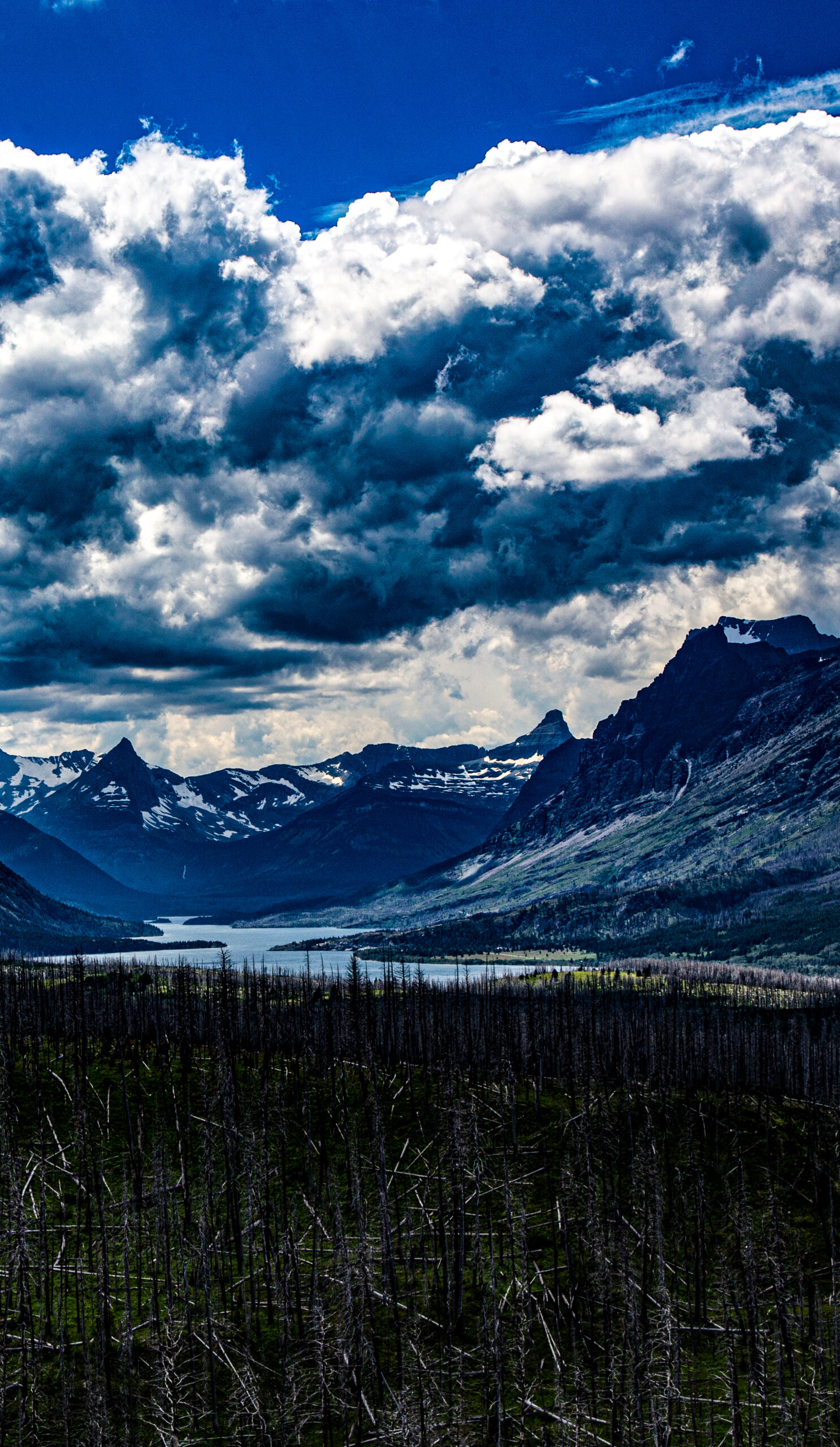
![]()
Badger-Two Medicine
The Badger-Two Medicine area has special spiritual significance to the Blackfeet. It is considered a cultural refuge, home to many of the Blackfeet origin stories, and a stronghold for their ceremonies and traditions. With no less than 147 culturally significant sites within the Badger-Two Medicine, this serene area possesses immense spiritual importance for the Blackfeet Nation.
Beginning in the early 1980s the US Government began issuing multiple oil and gas exploration leases in these sacred lands. beginning a 30-year legal battle between the US Government and the Blackfeet Nation. The US Government contended that they were allowed to issue leases based on the 1895 Treaty.
But many Blackfeet leaders maintain that they never agreed to give the federal government the right to extract the oil and gas underlying the area. And even if they did by their misunderstanding the basic constructs of the treaty, drilling oil and gas threatens long-standing cultural and spiritual interest in this sacred landscape.
Interestingly, when the government responded to the Blackfeet questioning the validity of issuing permits to drill for oil back in 1980, the government responded that the Treaty of 1895 gives them permission to do so. The very same treaty they claim does not exist since the land became a National Park. And now, in 2022, the US Government is still up to its old tricks and trying to exploit these incredibly Sacred Ancestral Blackfeet Lands.

Blackfeet Crossing the Two Medicine River with Camp on the Distant Shoreline
Thank you for taking the time to ready this presentation. The intention for presenting this information is to provide a comprehensive overview of the backstory as it pertains to the negotiations between the Blackfeet Nation and the US Government which resulted in the 1895 Treaty. And to reveal the aftermath of the Treaty up till modern times, in order to bring a truthful understanding of the issues surrounding the efforts to protect and preserve the Badget-Two Medicine area, forever.

